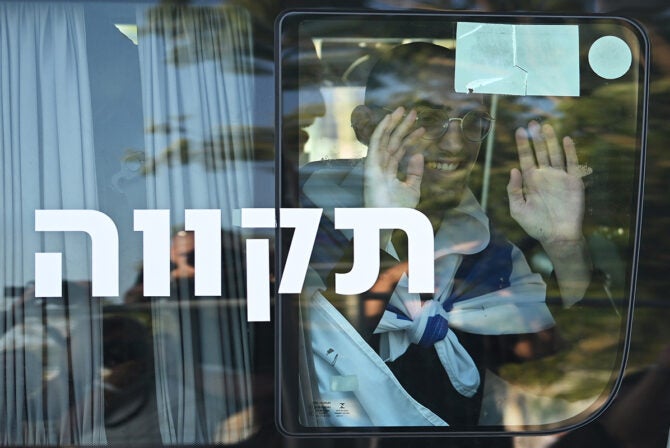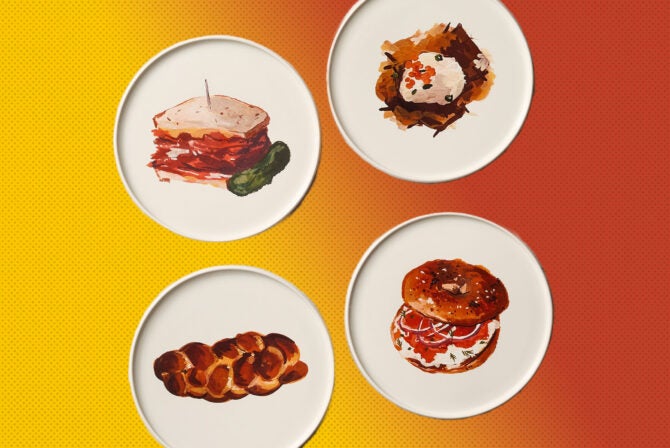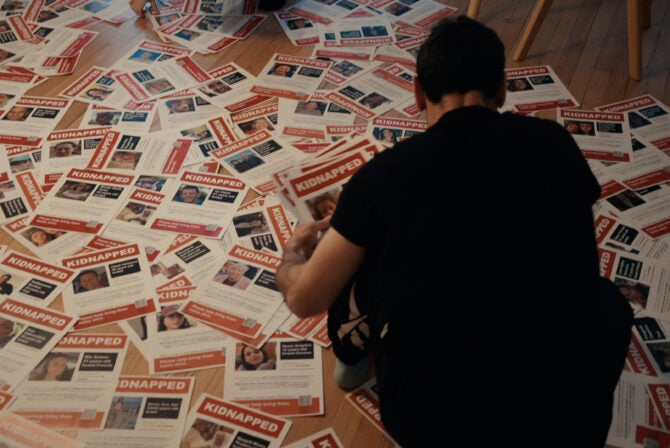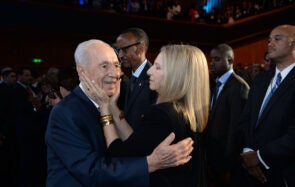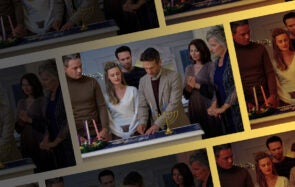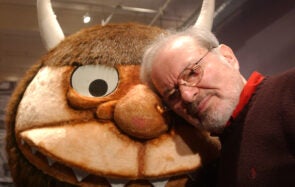On a recent Wednesday night, I baked challah with 999 other Jewish women.
I admit it, I started out a bit of a skeptic. I belong to a Conservative synagogue, and this event, called “MegaChallah Bake Chicago,” was sponsored by Chabad. While I yearned to be part of a huge community of women fulfilling an ancient mitzvah, I wondered, was there an ulterior motive to the event? What actually was the point of baking challah on only one single night with so many other women? What would it accomplish?
RECIPE: Peanut Butter Chocolate Chip Challah
But the opportunity was tantalizing. Ever since I read “Chana’s Voice” last spring, in which author Haviva Ner-David takes on and re-imagines the three “women’s” mitzvot listed in the Mishnah—challah baking, niddah (menstruation rituals), and Shabbat candle lighting—I was inspired. Ner-David explains, as does Rochie Pinson, a speaker at this event, in her new book “The Rising Life, Challah Baking Elevated,” that to fulfill the mitzvah of the “taking” of a piece of challah, blessing it, and offering it up to God, you have to make a certain amount of dough, which is easily accomplished when you bake with other women.
I have attempted to bake challah a handful of times, using the recipe that my children’s preschool handed out years ago. But my challah baking has been anything but regular, not a dependable ritual that my family could look forward to (and always solitary). It was so much easier to buy delicious store-bought challah.
When I entered the hectic lobby of the Skokie Holiday Inn, I could see hundreds of women, many wearing headscarves or sporting glorious, shiny blown-out hair, which made me think they were sheitels (wigs)—or great work by a local blow-out bar. There were baskets of cloths with a small sign offering them to anyone who wished to cover their head when doing the challah blessing, but purely optional. Still, I wondered, as a woman who does not cover her hair, if I would feel out of place once I found my seat.
RECIPE: S’mores Challah French Toast
Before we started actually making the challah there were clips shown on large projected screens that talked about Jewish women being special because of our “sensitivity,” and how each Jewish woman is a candle and could light and inspire other women, other candles, around them by doing things like baking challah. Sounds beautiful, but was this saying a Jewish woman’s place was in the home, or was I, as usual, over-thinking?
The film clips and introductions stopped, and it was time to make the dough. Each individual table setting had just the right measured amount of ingredients in little plastic containers: the flour, the sugar, the lukewarm water, the salt. We each had a silver mixing bowl, a little glass cup with an egg in it, and two sets of plastic gloves (one to wear while mixing the dough, one to wear when braiding the dough). Each table had a designated “Captain” to further organize things and keep the momentum going. The sheer amount of organization and planning was breathtaking to think about.
We were told to put the first three ingredients into our bowls—water, sugar, and yeast—and let them do their thing. I watched the yeast bubble, something organic and with a life of its own.
I could tell that one of the women at my table was an expert challah baker; she was kneading her dough with intention and direction and knew exactly when to stop. I asked her to look at my dough, and she told me to keep kneading it. All of the women were talking to each other about their dough, asking questions.
READ: The Western Wall Is For Me, Too
As the mixture took form and became more of a dough, I continued to ask the other women for advice: Do I keep punching it or stop now? Should I add more flour? Here I was, surrounded by a circle of women I did not know, who were eager to offer advice. One woman showed me how to twirl the dough into a round challah, first burying the raisins inside the dough.
I realized as I braided the dough that this is something my children did in preschool since the age of 2. For three years, each made a small challah every Friday; sometimes they ate it on their way home from school, and sometimes it made it to our Shabbat table. Now we were all experiencing the hands-on joy of communal baking—as adult women, we don’t often have the chance to be part of such a powerful thing.
Then a young woman belted out some songs while we waited for the dough to rise, and my skepticism stubbornly returned. The lyrics were about how much each Jewish woman shares with all other Jewish women, that looking at another Jewish woman’s face is like looking in a “mirror.” More lyrics included the lines, “We have each other. Nothing can divide us for we are forever one. When we put our hearts and minds together, a thousand glowing candles burning bright, and together we can drive away the night.”
OK, I thought, I would love to feel this way with other Jewish women, but can you really just cram 1,000 Jewish women in a room with fancy tables and expect instant bonding and community? Can we really together create change and light up the world?
But then the singer sang “Hine Ma Tov.” The women at my table linked arms with each other, and we all sang along with the Hebrew. My incessant questioning and skepticism suddenly ceased as I had no choice but to link arms and sway along with them as we sang and waited for the dough to rise. There was no choice but to be mindful for a moment—and I realized that for the first time, but hopefully not the last, I too, felt the power of the mitzvah of baking challah.
